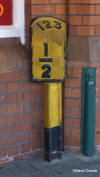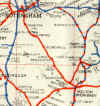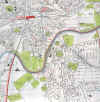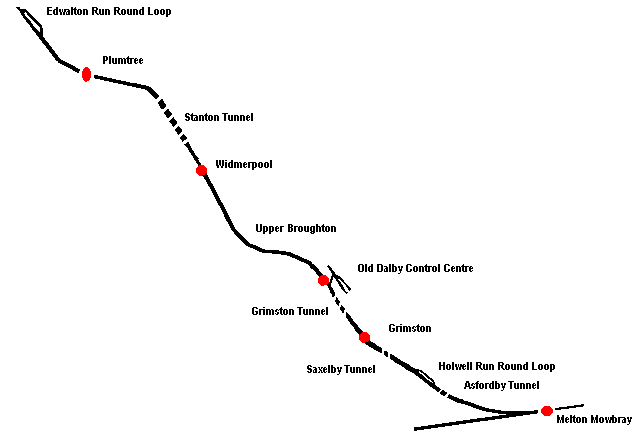|
As Nottingham's road traffic continues to increase it
has no doubt been the source of extreme regret and frustration that the line is
no longer complete, as a number of plans have been formulated over the years for
its re-instatement as a commuter route. There is just a possibility that the NET
tramway system might be able to make use of the line's formation but that is
probably a long way in the future and there would be the problem of changes to
the power supply being required.
A recent (2007) proposal by
Rennaisance Trains suggests that 'A local promoter
has identified opportunities for using the (Old Dalby Test Track) link to
relieve infrastructure congestion in the East Midlands and provide new through
services. As this is privately owned infrastructure different access conditions
will apply.'
Quite how they intend to get from Edwalton through
West Bridgford and into Nottingham station remains to be seen. My bet is still
with an extension to NET - if Nexus can get to Sunderland then why couldn't NET
go to Melton?
Test Line
Following closure in 1968 the Research Division of British Rail was searching for a suitable site to evaluate the gas turbine-powered experimental Advanced Passenger Train (APT-E), which was being built at the time. The line was considered to be ideal, having a number of suitable topographical features such as curves, cuttings and tunnels on the route. There are some amongst the old BR who say that the line was closed deliberately to enable the test track to be built for the APT.
|



